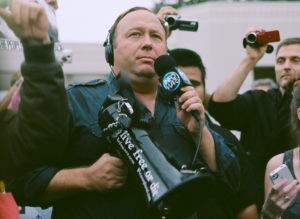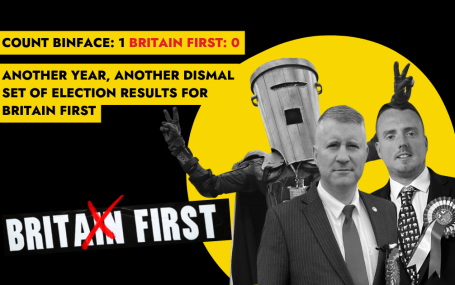HOPE not hate uses cookies to collect information and give you a more personalised experience on our site. You can find more information in our privacy policy. To agree to this, please click accept.
“He was one of us. He was a lonely guy who hated the world, anyone who wasn’t his race and women who date black men. He also hated liberals strongly and felt jews control the world. I’m sure he posted here or other alt right forums. You don’t just wake up and think like this, you develop this mindset online.”
These were the haunting words of one anonymous user on the “Politically Incorrect” message board of the 4chan.org forum, popular with the alt-right. In the days since the tragic shooting at Marjory Stoneman Douglas High School in Parkland, Florida, where 19-year-old Nikolas Cruz killed 17 people with a legally purchased semi-automatic AR-15 rifle, details have begun to emerge of his racist, homophobic and antisemitic views.
It’s perhaps no great surprise then that messages of praise and support for Cruz were not hard to come by on 4chan with posts like: “Who gives a shit? Hopefully he took non-whites out” in abundance.

Support also came from some Incels (Involuntary Celibates), a community described by the author David Neiwert as “a sort of alt-right toxic masculinity group”. Some celebrated Cruz as a hero akin to Elliot Rodger, who carried out a mass shooting in East Isla Vista in 2015, on their sub-forums on the website Reddit.
However, while repugnant, shows of support or veneration in the wake of an attack like this are just one element of the alt-right’s response.

Within moments of the reports of the tragic events hitting the news, the alt-right sprang into action, manipulating facts, spreading rumors and formulating and disseminating fake news.
Melissa Ryan, writing for Media Matters, outlined how pro-Trump, alt-right and alternative media personalities were quick to spread damaging, hurtful and misleading fake news about the attack stating, “It happens immediately, created and disseminated on purpose, often in real time as the event is unfolding.”
Whether it was Alex Jones suggesting it was a ‘false flag’, alt-right trolls spreading false information about the attacker being linked to a white supremacist militia or conspiracies about one of the survivors working for the FBI, the alt-right were extremely quick to muddy the waters with disinformation.
BuzzFeed even produced a listicle of the various pieces of misinformation being spread about the attack and the perpetrator. Misleading pictures circulated of the supposed shooter included comedian Sam Hyde (a hoax previously orchestrated by 4chan on multiple occasions), German YouTuber ‘DrachenLord’ and a 24-year-old named Marcel Fontaine.
Some of these conspiracies broke out of the extreme and marginal forums popular with the core of the alt-right and reached huge audiences. The top trending video on YouTube in the wake of the attack was a conspiracy theory that a survivor was actually an actor. YouTube have since removed the video but not before it had been viewed over 200,000 times. Worryingly, a recent Guardian article explained how YouTube’s algorithms may in fact favour extreme and conspiratorial content like this thereby expanding its reach via the “Up next” thumbnails.

Though fake news is objectionable more research needs to be done into its effects on society as existing scholarly output suggests the nature and magnitude of these aren’t always as obvious as one might presume. At present there isn’t even a consensual definition of what fake news actually is, with a recent report by Data and Society describing the debate as “fantastically contested”.
Yet, while few can agree on the exact contours of fake news most do agree that fabrication in the media is more prominent than ever and that this is something to be concerned about. According to Buzzfeed, during the 2016 U.S. election a selection of fake news stories generated more engagement on Facebook than the top election coverage of 19 major news outlets.
That said, a recent collaborative report by researchers at Princeton University, Dartmouth College and the University of Exeter titled Selective Exposure to Misinformation, explored the impact of fake news during the 2016 U.S. elections and gave reason to question this concern. While accepting that “selective exposure to politically congenial content [is] likely to extend to misinformation”, the report found, in the words of the New York Times, “Wide Reach but Little Impact”. While one in four Americans saw at least one false story, it was found that people still consumed far more real news from legitimate sources. False stories made up just 1% of Clinton supporters’ news intake and just 6% of Trump supporters’.
However, while existing evidence suggests there may be limited effect on elections, the impact of fake news on society can still be far reaching. At a basic human level the repercussions of being falsely named as a mass murderer, like Marcel Fontaine was this week, must be harrowing.
So too if you are a survivor like David Hogg who has to deal with being labelled an FBI stooge while simultaneously grieving for dead friends – allegations that have resulted in death threats.
Perhaps the best example of the potential for very real danger to result from the perpetuation of fake news remains the firing of an AR-15 rifle at a pizza restaurant in Washington D.C. in December 2016, after it was falsely alleged the restaurant was the base of a secret sex abuse ring involving Hillary Clinton.
Beyond these individual and direct impacts, there are also potentially broader and unforeseen long term negative effects. In an age when some already find it difficult to judge the reliability of online content, fake news could serve to exacerbate existing mistrust in the fourth estate. As a recent report by the Reuters Institute at the University of Oxford explained, discussions around fake news already play out “against a backdrop of low trust in news media, politicians, and platforms alike—a generalized scepticism toward most of the actors that dominate the contemporary information environment.”
As well as exploring its impact in more detail, it is also vital that we further understand how fake news is created and disseminated.
The moment that legitimate news emerges contradicting the preferred alt-right narrative of an event like that which occurred in Florida, the knee-jerk reaction within the movement is to first call ‘false flag’ and then barrage the internet with conspiracies, obfuscation, outright lies, half-truths and misinformation.

The most prominent originator of far-right fake news is the popular forum 4chan.org, more specifically its “Politically Incorrect” message board, abbreviated to /pol/. Since its launch in 2003, it has helped shape the online world by spawning a large number of internet subcultures and propaganda devices. While its visitors are not aligned to the alt-right in their entirety, it is the source of much of the movement’s creative and antagonistic energy.
Whereas some fake news spreads from 4chan and the like organically, building momentum as it goes, there is also clear evidence that it is often the result of conscious, orchestrated efforts to further disseminate misleading content by amplifying its reach using media manipulation.
Importantly, there is a pattern when it comes to the direction of travel for far-right fake news (Graphic):
Formulated on online message boards like 4chan or 8chan -> Spread on mainstream social media like Twitter or Facebook -> Sometimes amplified using manipulation tactics such as bots -> picked up by alternative media platforms like InfoWars or The Gateway Pundit -> Picked up by more mainstream right-wing platforms like Fox News.
Spreading fake news often relies on strategic amplification. Using the power of social networks and ‘super spreaders’ (people with large social media followings), manipulators can push stories ‘up the chain’ of media outlets. An item might be posted on a forum such as 4chan where barriers of entry are low or non-existent, and other users can pick it up and share it on mainstream social media platforms. Influential super spreaders amplify the story, which is then taken up by smaller publications which larger news outlets sometimes make use of to find new material and in the process give false legitimacy to. Notorious fake news site The Gateway Pundit is, for example, often cited by Fox News.

One of the best examples of this was the “#Macronleaks” episode in 2017 when 20,000 emails related to the French election campaign of Emmanuel Macron were leaked. False documents were then added in amongst the genuine emails before being spread across the internet using amplification tools such as bots (a tool often relied on by the far right). The leak was shared and discussed on 4chan, spread on social media by alt-light social media personality Jack Posobiec and the wider alternative media and then finally picked up by mainstream media platforms.
The events in Florida last week were tragic and we are right to be angry and upset with those on the far right who seek to destroy the truth around such events for their own political gain. Yet anger and outrage will not be enough and if we are to effectively fight back against the prejudiced purveyors of hateful fake news, we need to do much more work to understand how it works, how it spreads and what impact it has.
That’s why HOPE not hate has designed cutting edge software to track the formation and dissemination of far-right fake news, giving us new insights into how it spreads and how we can intervene earlier than ever before.

Another year, another dismal set of election results for Britain First In the elections last week, Britain First performed dreadfully in every seat it contested,…